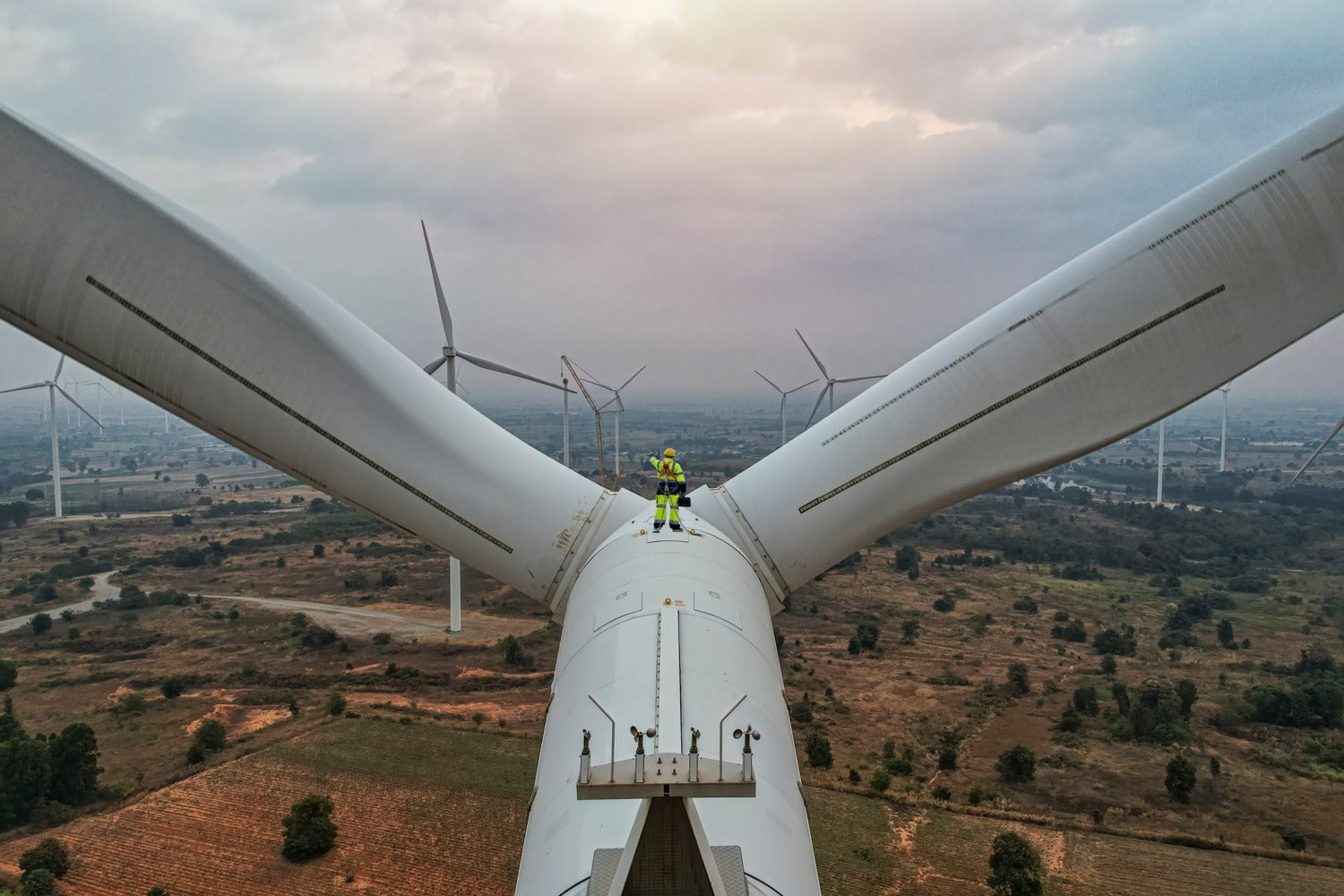Wind turbines are fantastic sources of renewable energy, providing 10% of U.S. electricity and about half of all the country’s renewables. But when they reach the end of their 20- to 25-year lifespan, their blades mostly end up in landfills or deep storage. That might not seem like a big deal, until you realize that 1) the blades can be longer than a Boeing 747 wing, 2) there are currently 3,000 to 9,000 blades getting decommissioned each year in the U.S., and 3) that number’s set to jump to 10,000 and 20,000 a year through 2040.
Remember, though: Turbine blades are a mere percentage of a percentage of all the waste dumped in landfills. But with a mission of sustainability, wind energy companies and independent researchers are searching for ways to recycle or repurpose all those spent spinners.
What happens to old wind turbines
The main body of a wind turbine, made up of materials like steel, copper, and aluminum, is easily recyclable. The blades are another story since they are made of a difficult-to-separate mix of fiberglass and resins, which until recently couldn’t be recycled at all.
So, decommissioned blades are usually trashed—if they can even make it to landfills. Because they’re so large, they’re incredibly difficult to transport. And breaking them into smaller pieces requires gigantic equipment like vehicle-mounted wire saws. Even when companies intend to recycle blades, delays can stretch the process out for years, leaving an eyesore and health hazard in the communities where they’re left to sit.
What can we do with the blades?
Recycling wind turbine blades is difficult, but several companies have taken on the challenge in the past several years. In 2022, Tennessee-based Carbon Rivers started using a chemical process to separate out the fiberglass so that it can be reused in the automotive and shipping industries or in textiles. Washington-based Global Fiberglass Solutions recycles blades into composite panels, railroad ties, and plastic pellets. And France-based Veolia is using the recycled materials to make cement—a process that also reduces the carbon emissions of cement manufacturing by 27%. You can even buy a pair of fresh white sneakers made with recycled blades. Of course, these aren’t perfect solutions: Like chemical plastic recycling, chemically breaking down fiberglass can release toxins.
Some countries are instead going a step better and reusing the blades themselves. Ireland is turning them into pedestrian bridges, Denmark’s building bike shelters, the U.S. is fashioning park benches, and the Netherlands is standing up playgrounds.
Meanwhile, a few turbine manufacturers are planning for the future by designing blades that use different materials and are easier to recycle. Denmark-based Vestas, for instance, has committed to inventing and using zero-waste wind turbines by 2040, with benchmark goals for 50% recyclability by 2025 and 55% by 2030.
For now, recycling the blades is expensive and troublesome, which is why most still end up as garbage. But in a step in the right direction, Germany, Austria, Finland, and the Netherlands have prohibited blades from being sent to dumps. Experts say more mandates like these, or financial incentives, will be necessary to keep landfills from turning into blade cemeteries.

